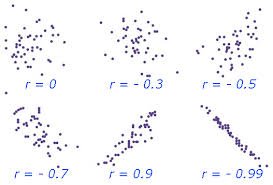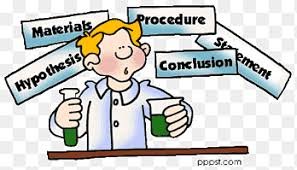Introduction

Identifying, classifying, and describing abnormal behaviour
Unisa study Guide
Free resources and links
Diagnostic and statistical manual of mental disorders _ DSM-5 ( PDFDrive ).pdf
Essentials of Understanding Abnormal Behavior 3rd Edition – PDF Room
PYC3702-Abnormal-Behaviour-and-Mental-Health-Exams.pdf
Key Vocabulary
There is a lot of important terminology to get familiar with in abnormal psychology, so let’s get through a good chunk of it straight away.
Assignment 1: a. Prevention

How prevalent are mental disorders

Mental disorders are extremely common. Some studies show that about half the population being studied has had symptoms of a mental disorder at some point in their lifetime. (+/- 50% lifetime prevalence)
There is a lot of social stigma associated with mental illness, due to stereotyping, prejudice and discrimination. This then causes self-stigma, as people internalize these social judgements, and incorporate them into their self-image.
A negative self-image then harms their self-esteem and self-efficacy.
Causes of mental disorders
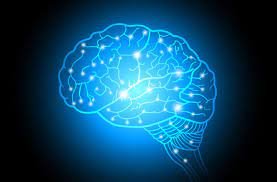
- Biological
- symptoms occur in clusters called syndromes
- The first DSM system of classification classified mental illnesses based on their physiological causes
- General paresis was proven to be caused by late stage syphilis

2. Psychological
- many mental illnesses arise from stress, conflict or other psychological, cognitive and emotional factors
- Mesmer’s work with hypnotism showed that suggestion could both cause and treat symptoms
- Thus that the mind can be a causal factor.
Contemporary trends
Multicultural Psychology
Mental health professionals recognize that they need to
- be culturally sensitive
- be culturally aware of different cultures and mores
- Develop therapeutic strategies that work for people from diverse cultures
Positive Psychology
studies positive human qualities associated with thriving
focusses on 3 domains:
- Positive feelings: well-being, contentment, hope & optimism for the future
- Postive traits: courage resilience, compassion, spirituality & wisdom
- civic virtues and institutions that foster good citizenship
By identifying positive and helpful qualities, we can teach people strategies for self-regulation, coping and resilience to prevent mental health condition and help people to recover from them
The Recovery Movement
- A pushback against the pessimistic view that people with serious mental illness cannot lead a good life, hold down a job, or cope with life in general
- The recovery movement affirms that people can recover and lead satisfying, hopeful and contributing lives, even with their illness.
- Looks for new ways to develop meaning and purpose while living with a mental illness
- As support and treatment improves, so too do prognoses
- Works to prevent and reduce stigma and discrimination by educating, lobbying for policy change and advocating for the rights of people with severe mental disorders.
Changes in the therapeutic landscape
- Psychiatric medication (and most specifically psychotropic medication) has brought about a revolution in treatment, enabling people with mental illnesses to live their lives outside institutions, and manage their symptoms.
- This also made treatment far more affordable.
- The rise of medical insurance gave insurance companies considerable control over what mental conditions are treated, how and to what extent.
- This in turn compels therapists to use interventions that have strong research support.
- However, since 2010, at least insurance companies were legally compelled not to withhold coverage from people with mental illness or addictions.
- Additional legislation, the Affordable Health Care Act has helped to make health insurance more affordable in the USA.
Research and evidence-based medicine
This is an exciting time for neuroscience and evidence-based research. New understandings of the causes of mental illness and potential treatments are being developed across the scientific community.
So contemporary models of abnormal behavior include these aspects:
- biological
- organic
- biochemical
- physiological
- genetic
- psychological
- emotional
- behavioral
- cognitive
- in the context of social and cultural specifics
Prevention of Abnormal Behavior
Community Psychology
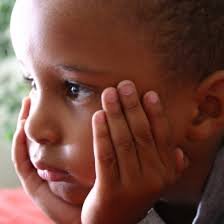
Community psychology is directed at helping ordinary people who cannot afford to access clinical psychology.
It focusses on how psychology professionals can intervene in the social system to help people who are not having their basic needs for food, shelter and safety met.
And it brings attention to widespread problems associated with poverty such as:
- substance abuse
- crime
- violence
- domestic violence
Community psychologists look at collective social solutions such as creating or improving organizations so that they help people better and meet their needs.
They intervene to improve people’s situations, quality of life and emotional wellbeing.
Community psychology looks for the strengths of a community and then works to build those strengths.
4 theoretical models of community psychology
- Mental health model: goal is to prevent mental illness & its negative effects on people’s lives
- Social action model: Helps the poor meet their needs and move up in live. Works on the problem of social inequality
- Ecological model: Sees the community as a network of interrelationships, like an ecology
- Organisational model: Studies and prevents the incidence of mental disorders within organizations. Facilitates change and development.
Community intervention is usually fairly public, and works with non-professionals, volunteer and self-help support networks.
Prevention of Psychopathology
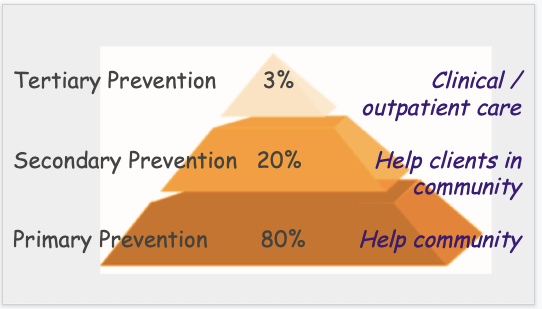
Community psychology aims to keep people well.
- primary prevention: less new cases
- secondary prevention: shorten the duration
- tertiary prevention: minimize the effects
Primary Prevention
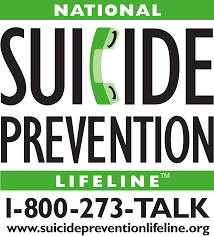
How to reduce the incidence of new cases of mental disorders?
By increasing support for people. For example by creating a housing program for the homeless
and decreasing threats to mental wellbeing. For example by reducing crime in a community.
As we South Africans know, primary prevention is heavy lifting. It is not easy to implement. In fact it is even resisted. Why is this?
- Big investment with unknown future rewards: Only through prospective and longitudinal research can you identify successes, failures and how these arose from the process. It takes time to know if a primary prevention program works. When it is actually rolling out, you don’t know if it is working or not, because the results are still in the future.
- Competes with traditional programs that treat mental illness
- Prevention is often only possible with broader changes in society, and this is a big ask for mental health workers. It requires a lot of networking and organisational support.
- How to get funding for prevention, which was funneled for treatment before?
- There is a lot of work: planning, work and long-term evaluation.
Secondary Prevention
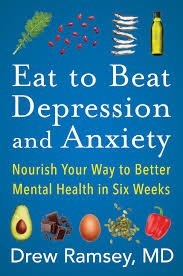
Shorten duration. Reduce impact.
So how to reduce duration and impact?
- Early detection
- Effective treatment
Problems include:
- Unreliable diagnosis
- treatment is very patient-specific
- Public health treatment takes ages because it is under-funded. There is usually a waiting list. There are not enough mental health employees or public health facilities.
“Walk-in” clinics, crisis intervention facilities, and emergency telephone lines do help, and are often run by Non-Governmental Organizations. (NGOs)
Tertiary Prevention

Tertiary prevention is often about the release from mental hospitals and institutions.
- Transition back to normal life.
- It is not always easy for patients to feel welcomed back into the community and family
Assignment 1 b: Models of psychopathology

Models of Abnormal Behavior
There are three categories of model:

- Linear models: Cause & Effect
- biological, psychoanalytic, psychodynamic, behavioural, cognitive, humanistic, and existential perspectives/models

- 2. Circular models: Looks for reciprocal situational interactions
- systems perspective (family systems) and ecosystems perspectives/models

- 3. Multipath model: Holistic explanation using 4 dimensions:
- Biological Factors
- Psychological Factors
- Social Factors
- Sociocultural Factors

Assumptions of the multipath model
- No single perspective is enough to explain mental disorders on its own
- There are multiple influences on the development of a disorder, so explanations must include all four dimensions – biological, psychological, social and sociocultural.
- Not all dimensions are equally significant in any disorder
- Causality is complex and reciprocal
- Each dimension may offer potential strengths and assets to help prevent, reduce or remove symptoms.
- Permeable boundaries between dimensions
Dimension 1: Biological Factors

Key Assumptions:
- Our characteristics are genetically predisposed. Many of our personal qualities are from complex interactions between biological makeup and the environment.
- Thoughts, emotions and behavior are biologically based in the brain. Over time they can change brain structure.
- Many mental disorders are associated with inherited biological vulnerability and/or a brain abnormality.
- Medications influence the brain, and this is how they work.
- The study of these medications is psychopharmacology. There are 3 types of psychotropic medications:
- Anti-anxiety psychotropics “minor tranquilizers”
- Anti-psychotic psychotropics “major tranquilizers”
- mood stabilizers
Dimension 2: Psychological factors
There are 4 very different psychological perspectives for understanding abnormal psychology.
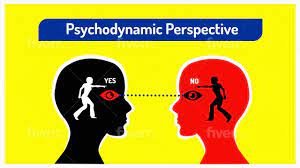
- Psychodynamic: = looking at childhood trauma, anxieties, unconscious conflicts. Originally Freudian. Looks at how people can understand their emotions and gain insight into themselves.

- 2. Behavioral: learning through conditioning.
- Observational learning is also possible through social learning.
- Exposure therapy,
- systematic desensitization and
- social skills training are all based in this paradigm.
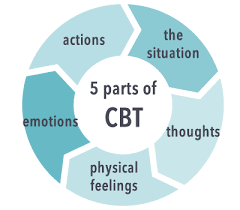
- 3. Cognitive-behavioral: How we think about things can have a massive effect on our wellbeing. Irrational thoughts and beliefs such as catastrophizing can lead to anxiety and depression.
- Cognitive behavioral therapy, CBT helps people think and act differently and had measurably good results in treating anxiety and depression.
- Third wave CBT is about noticing, but not reacting to, negative thoughts and feelings (mindfulness).
- Dialectic behavioral therapy (DBT) helps clients regulate emotions, cope with stress and improve social skills by reinforcing positive actions with an emphasis on validating and accepting the client.
- ACT is Acceptance and commitment therapy.

- 4. Humanistic: Avoids labels and focusses on free will.
- Helping people live up to their highest potential and find meaning and self-acceptance.
Dimension 3: Social Factors

This is all about relationships.
- We need healthy relationships to be mentally healthy and thrive.
- Social relationships nourish our mental health:
- emotional support
- love
- compassion
- trust
- sense of belonging, etc etc
- When social relationships are dysfunctional or absent, this can cause great mental distress
So the social relational models look at family, couple and group perspectives.
- The family systems model
- One person’s behavior affects the entire family
- The family strongly influences our personalities and behaviors. So a person’s mental illness often reflects unhealthy family dynamics, especially poor communication. ie the cause is the family system.
- Therapy must focus on the family system rather than the individual.
- The conjoint family therapeutic approach teaches families to communicate clearly and constructively instead of dysfunctionally.
- Strategic family approaches look at and intervene to develop healthier power distribution within the family.
- Structural family approaches reorganize family relationships that may be too enmeshed or too distant.
- Couples therapy
- Group therapy is between strangers that share similar challenges.
Dimension 4: Sociocultural factors

Sociocultural factors include: race, ethnicity, gender, sexual orientation, religious preference, socioeconomic status.
- Many culturally specific disorders are listed in the DSM. For example, “Kufungisisa (“thinking too much” in Shona) is an idiom of distress and a cultural explanation among the Shona of Zimbabwe.” DSM 5 p879
- Cultures and other factors may subject us to unique stressors.
- And influence how we express disorders
Gender Factors

- Women have a higher prevalence of depression, anxiety and eating disorders.
- Lower pay, more responsibilities at home, sexual aggression & stereotyped standards of beauty etc
- Men: Higher suicide rates, substance abuse and anti-social disorders.
Socioeconomic Class
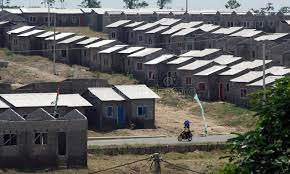
- Lower class: multiple stressors, external locus of control, poor health, higher depression, hopelessness, helplessness, dependence and inferiority. Social inequalities directly correlate with increased violent crime.
- Upper class: More easy to access treatment and support, as well as diagnosis.
Immigration and acculturative stress

Acculturative stress is the stress that people experience from moving into a new culture.
Race and ethnicity

The multicultural model looks at the differences, strengths & limitations of different cultures.
Different dimensions that cultures can be measured on include:
- individualist vs collectivist
- direct vs indirect communication styles
- large or small power distance. very hierarchical cultures have a large power distance. Egalitarian cultures have a low power distance
Racism, bias and oppression can be major stressors.
Assignment 1: c Classifying
Criteria for a problem to be a mental disorder
A mental disorder is a syndrome characterized by clinically significant disturbance in an individual’s cognition, emotion regulation, or behavior that reflects a dysfunction in the psychological, biological, or developmental processes underlying mental functioning. Mental disorders are usually associated with significant distress or disability in social, occupational, or other important activities. An expectable or culturally approved response to a common stressor or loss, such as the death of a loved one, is not a mental disorder. Socially deviant behavior (e.g., political, religious, or sexual) and conflicts that are primarily between the individual and society are not mental disorders unless the deviance or conflict results from a dysfunction in the individual, as described above.”
Diagnostic and statistical manual of mental disorders DSM-5
So in short a mental disorder has 3 positive qualities
- involves a significant disturbance in thinking, emotional regulation and/or behavior
- caused by psychological, biological, or developmental dysfunction.
- Causes significant distress or disability in day to day functioning
And it has two exclusions:
- Is not merely a culturally expected response to common stressors or losses
- or deviance in conflict with social norms.
Assessment and Classification
Possible research methods
What is abnormal psychology?
Key vocabulary
WTF

Please note that much of chapter 3 is missing from here – I got a bit lost. I’m skipping over the diagnostic tests part and adding in the content I want in my own head for the rest of the course.
Categories of Disorders
We all know most of these, but having a shopping list in the head is a very important tool for the rest of the course, and for the future.
Neurodevelopmental disorders
Cognitive, learning & language disabilities that arise during development (growing up)
Neurocognitive disorders
Psychological & behavioral abnormalities due to brain dysfunction
Substance-related and addictive disorders
excessive or misused drugs, alcohol or medications that result in impaired functioning. Includes behavioral addictions eg gambling
Schizophrenia Spectrum & Other Psychotic Disorders
Disorders marked by:
- severe impairment in thinking and perception
- often involves
- delusions
- hallucinations
- inappropriate affect
Bipolar & Related Disorders
Episodes of mania/hypomania alternative with normal/depressed mood
Depressive disorder
Feelings of:
- sadness
- emptiness
- social withdrawal
Anxiety Disorders
Disorders characterized by excessive or irrational anxiety/fear.
- Often accompanied by avoidance behaviors
- and fearful thoughts/worry
Obsessive-compulsive & Related Disorders
Disorders characterized by obsessions (recurrent thoughts) and/or compulsions (repetitive behaviors) and other compulsive behavior such as hoarding
Trauma & Stressor-related Disorders
Disorders associated with chronic/acute reactions to trauma & stress
Somatice symptom & related Disorders
Disorders involving physical symptoms that cause distress and disability, including high levels of health anxiety & disproportionate concern over boldly dysfunction.
Dissociative Disorders
Disturbance or alteration in memory, identity or consciousness, including:
- amnesia
- having two or more distinct personalities
- feelings of depersonalization:
- the feeling that you’re observing yourself from outside your body
- you have a sense that things around you aren’t real
Sexual Dysfunctions
Disorders involving the disruption of any stage of a normal sexual response cycle including:
- desire
- arousal
- orgasm
Gender Dysphoria
Significant distress associated with conflict between biological sex and gender identity.
Paraphilic Disorders
Recurrent, intensive sexual fantasies or urges involving nonhuman objects, pain, humiliation, or children
Eating Disorders
Disturbed eating patterns and body dissatisfaction involving binging, purging & excessive dieting
Sleep-Wake Disorders
Problems in:
- initiating/maintaining sleep
- excessive sleepiness
- sleep disruptions
- sleepwalking
- repeated nightmares that wake you up
Personify Disorders
Disorders involving personality traits that are:
- inflexible
- maladaptive
- notably impair functioning
- cause subjective distress
Assignment 1 d: African

Psychopathology from an African Perspective
Why do we need an African understanding?

- Western Psychology collaborated in the oppression of blacks and Africans, through prejudice, stereotyping and discrimination.
- Western psychology does not speak well to the lived experience of black and poor people, and is not open and available to them.
- Western Psychology does not accurately represent and therefore is not easily applicable to African life and mentality.
3 Levels of acculturation
- Traditional
- Transitional
- Modern

Etics
intercultural commonalities, universal psychological truths eg facial expressions that correlate with emotions.
Emics
culturally specific findings, relative truths eg: the calling of the ancestors – ukuthwasa

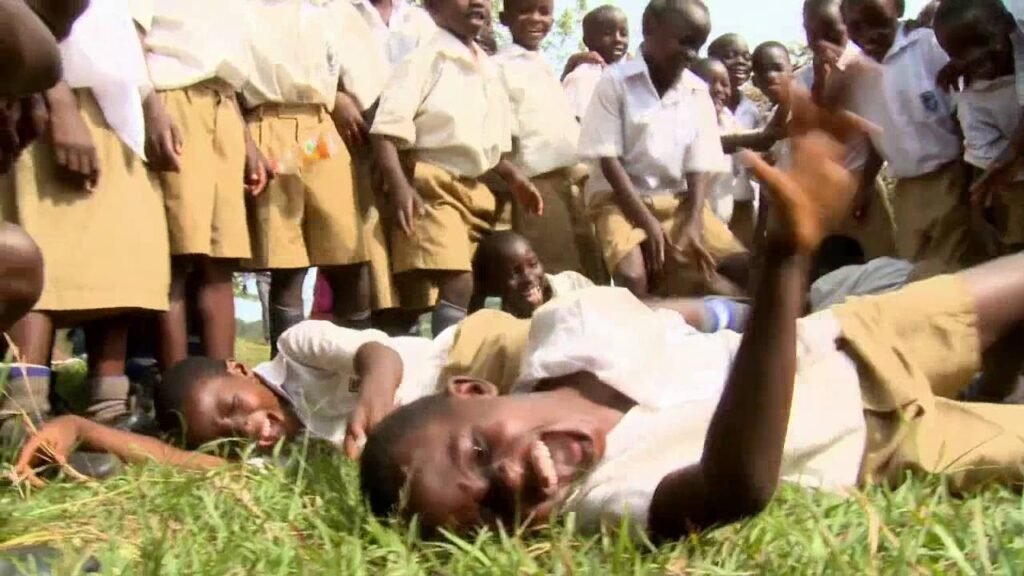
The role of culture in psychopathology
- Culturally specific stressors eg: racial discrimination
- some syndromes are more common in some cultures eg: Foetal alcohol syndrome in the Cape Wineland’s rural poor
- Some cultures may be more or less psychopathologic
- Some mental disorders are universal, but their cultural content is culture specific eg: hearing Jesus or hearing the Prophet Mohammed in schizophrenia
- Different cultures tolerate mental illness to a different extent
- And interpret mental illness differently
- Cultural transitions can also cause psychopathology, such as an increase in suicide, aggression or drug addictions
African World view
People choose between their worldviews based on what is available and many other factors to understand and treat mental illness as it arises.
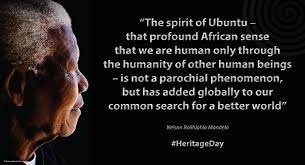
Ubuntu: Strong emphasis on the social, on community, and on humanity as the centre of the universe.
Everything is filled with spirit. There are both natural and supernatural causes for illness.
Everybody is interconnected. Success is about contributing to, and being part of, the community and extended family.
The past is important, and needs to be understood. The future has not yet happened and is less emphasized.
| African healing | Western healing |
| natural & spiritual causes | scientific causes |
| supernatural, holistic | fear of supernatural |
| magical | positivistic |
| harmony with nature | mastery of |
| harmony with universe | mastery of |
| present-oriented | future-oriented |
| desire to follow tradition | desire to succeed |
| respect for elderly/ancestors | disregard |
| group over individual | personal success over group |
| cooperative | competitive |
| self-depreciation | individualist & aggressive |
| holistic | analytical |
| home and family | migratory, upward mobility |
| intuitive, spiritual | consciousness & intelligence |
| subjective | objective |
| natural & humanistic | technological & scientific |
| intuitively logical | empirically logical |
Paraphrased from Stricken, 1990, p14

Traditional African Perspective on Psychopathology
Mind, body and spirit are seen holistically. In unity and interconnection.
There is also a strong emphasis on being part of the group and on relationships, not only with the tangible world of people and nature, but also with the intangible world and the ancestors.
Mental problems arise because of the failure of human relations and disruption of social equilibrium and behaviors such as being selfish, aggressive or envious are seen as pathological. So harmony is encouraged.
Why rather than how is the question, and the supernatural realm is often seen as the cause.

Supernatural possible causes for mental illness: Ukufa kwabantu
- sorcery
- disharmony between a person and their ancestors
- Punishment from God/Gods
- A curse
- offense against God/Gods
- Disruption of harmony in the past
- natural causes – Umkhuhlane
- breaking of taboos or traditional customs
- disruption in social relationships
- angry ancestors
- possession by evil spirit
The illness lies in the collective, not in the individual. It is all about interpersonal relationships.
Traditional norms and rituals are an important part of healing.
The ancestors are angry if traditional social rites around birth, marriage, death and initiation are not performed, or if offerings of animal sacrifice and beer are not given. If the ancestors are not informed of developments in the family, they are displeased. Finally, the ancestors and God can decide whether or not to cure an illness.
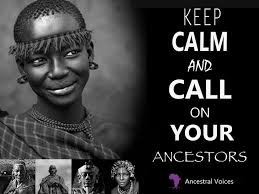
Key terminology
Ukufa kwabantu
Illness caused by the supernatural, eg: ancestors
Umkhuhlane
Illness from natural causes
Abaphansi basifulathele
The Ancestors have withdrawn their protection
Badimo ba re furaletse
The ancestors have withdrawn their protection
Ukuthwasa
Creative illness which is a calling from the ancestors to become a diviner, or a spiritual awakening
Amadlozi (Zulu)
Ancestors. The ancestors are benevolent protectors of the people of the tribe and their families. They serve as intermediaries between the people and God.
Badimo (Sotho)
Ancestors
Umnyama
Illness or adversity because of a state of impurity caused by being in contact with a polluted environment where birth, death, miscarriage, abortion or menstruation have occurred
Senyama
Illness or adversity because of a state of impurity caused by being in contact with a polluted environment where birth, death, miscarriage, abortion or menstruation have occurred
Umkhondo omubi
“Crossing a dangerous track”
Mohlala o mobe
“Crossing a dangerous track” When you go to a new area without first strengthening yourself, you may become ill because of the new environment. You may cross a dangerous track which may make you ill.
imimoya emibi
polluted air: People or animals leave tracks wherever they go. These tracks may be inhaled as polluted air, which can contaminate you. Touching or stepping over the track can also contaminate you.
moya o mobe
Polluted air – think of the bad vibes of a train subway and how they affect you. Pregnant women and newborns need to be protected from contaminated and polluted environments – sometimes by staying indoors for a while.
Mokgotlhane
minor illness eg Flu
Umkhuhlane
= mokgotlhane
Mmopi
God
uMvelingqangi
Mmopi/God
Sangoma
healer/diviner, who has supernatural powers from God and the ancestors, helps treat mental illnesses of supernatural origin

